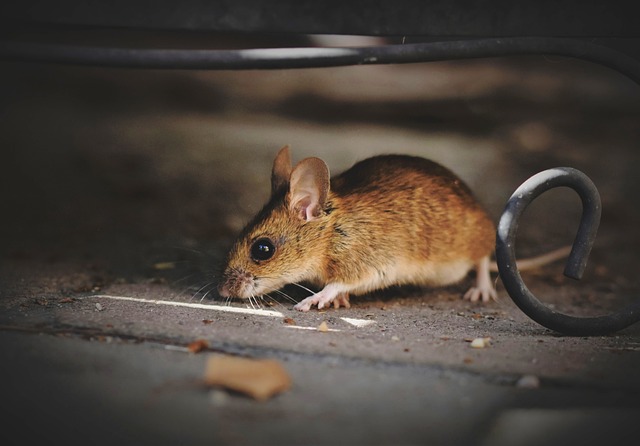Dealing with a mouse in your walls can be a real headache. From the unsettling sounds of scratching and scurrying to the potential risks they pose to your home and health, it’s a problem that needs to be addressed promptly and effectively.
In this guide, we’ll tackle the issue of finding a mouse in your wall. We’ll explore the signs that indicate their presence, the risks they pose, and the steps you can take to address the problem. Whether you’re dealing with a minor nuisance or a full-blown infestation, we’re here to provide practical advice and solutions to help you reclaim your space. Let’s get started!
Signs of a Mouse in Your Wall
When it comes to detecting a mouse infestation within your walls, there are several telltale signs to watch out for:
- Auditory Cues: One of the most common indicators of a mouse in the wall is the sound of scratching, scurrying, or gnawing. You can hear these noises at night when mice are most active; they can be quite distinct, especially in quiet environments.
- Visual Evidence: Keep an eye out for visual clues like droppings, urine stains, or gnaw marks on surfaces. Mouse droppings are small and pellet-shaped, resembling grains of rice, while urine stains may appear as dark spots on walls or floors. Additionally, mice may leave behind chewed-up materials or nesting materials such as shredded paper or fabric.
- Unpleasant Odors: Mice use urine to mark their territory, and the scent can become more pronounced in areas where they are active. Additionally, the smell of decaying rodents or their nests may also be present if the infestation is severe.
Being vigilant for these signs can help you identify a mouse infestation early on, allowing you to promptly address the problem before it grows out of control.
Risks of Mice Your Wall
When mice take up residence within the walls of your home, they bring along a host of risks and problems that can impact both your property and your health:
Structural Damage: Mice are relentless chewers, and their constant gnawing can cause significant damage to your home’s structure. From chewing on wooden beams and insulation to damaging electrical wiring, mice can compromise the integrity of your walls and threaten your property’s stability.
Health Hazards: A mouse infestation in your wall can introduce allergens and pathogens into your living space, increasing the risk of respiratory problems and other health issues. Mice can transmit diseases through their droppings, urine, and saliva.
Electrical Fire Hazards: When mice gnaw through wires, they expose them, creating a dangerous fire hazard. If this behavior goes unnoticed or unattended, it could result in electrical malfunctions and even catastrophic fires.
Addressing a mouse infestation in your walls is essential for safeguarding your home and protecting the health and safety of your family. By understanding the risks involved and taking proactive measures to address the problem, you can minimize the damage caused by these unwelcome intruders.
Eliminating That Mouse in Your Wall
When dealing with a mouse in your walls, adopting a comprehensive approach that removes existing mice and prevents future infestations is essential. Here are some effective strategies to consider:
Trapping Methods: Snap traps and electronic traps are viable options. Snap traps deliver a quick, lethal blow, while electronic traps administer an electric shock. Place traps strategically along walls, near entry points, and in areas frequented by mice.
Sealing Entry Points: Preventing mice from entering your home is crucial for long-term control. Inspect the exterior of your home for any gaps or cracks that mice could exploit. Seal these openings with materials like caulk or steel wool that mice cannot chew through. Focus on sealing areas around utility pipes, as they are common entry points.
Proper Sanitation Practices: Store food in tightly sealed containers, promptly clean up spills and crumbs, and regularly dispose of garbage. Declutter your home, as mice are drawn to hiding spots created by clutter.
Use of Repellents: While not always a primary solution, repellents can supplement other control methods. Natural repellents like peppermint oil or mothballs can be placed near entry points or areas of mouse activity.
Combining these strategies with professional pest control methods can effectively remove a mouse infestation in your walls and help reduce the risk of future infestation. Consistency and thoroughness are key, so be diligent in your efforts to keep mice out of your home.
When to Contact the Professionals For a Mouse in Your Wall
While DIY methods can be effective for minor mouse infestations, severe or persistent problems may necessitate the expertise of pest control professionals. Pest control experts have the knowledge and resources to handle large infestations safely and effectively.
If you’re uncertain about the type of pests in your walls or suspect structural damage to your property, it’s crucial to have a professional assessment. Our pest control professionals can accurately identify the pests and recommend the most appropriate treatment.

If you’ve dealt with recurring mouse infestations in the past, it could signal an underlying issue that requires attention. Pest control professionals can assist in identifying and resolving the root cause of these recurring infestations, thereby preventing future problems.
It’s important to remember that pest control professionals have the necessary training and experience to manage mouse infestations. If you find yourself facing any of the situations outlined above, don’t hesitate to contact a reputable pest control company for assistance.
When you’re struggling with a mouse in your wall or have other pests, give us a call!

